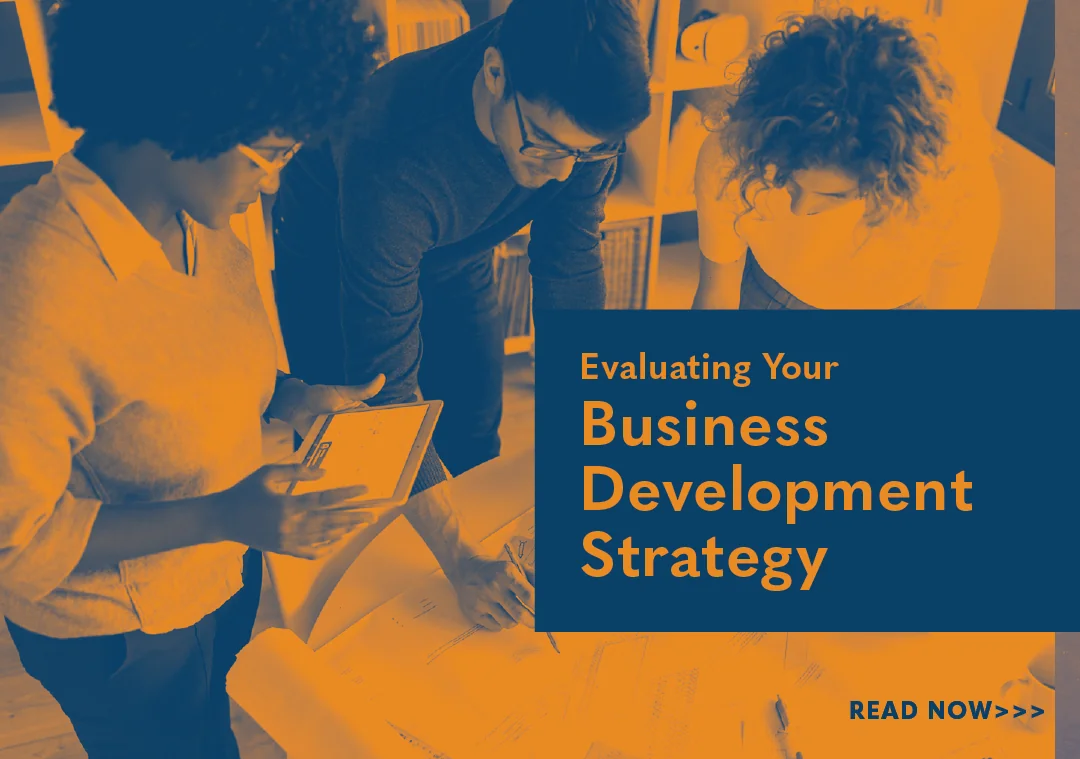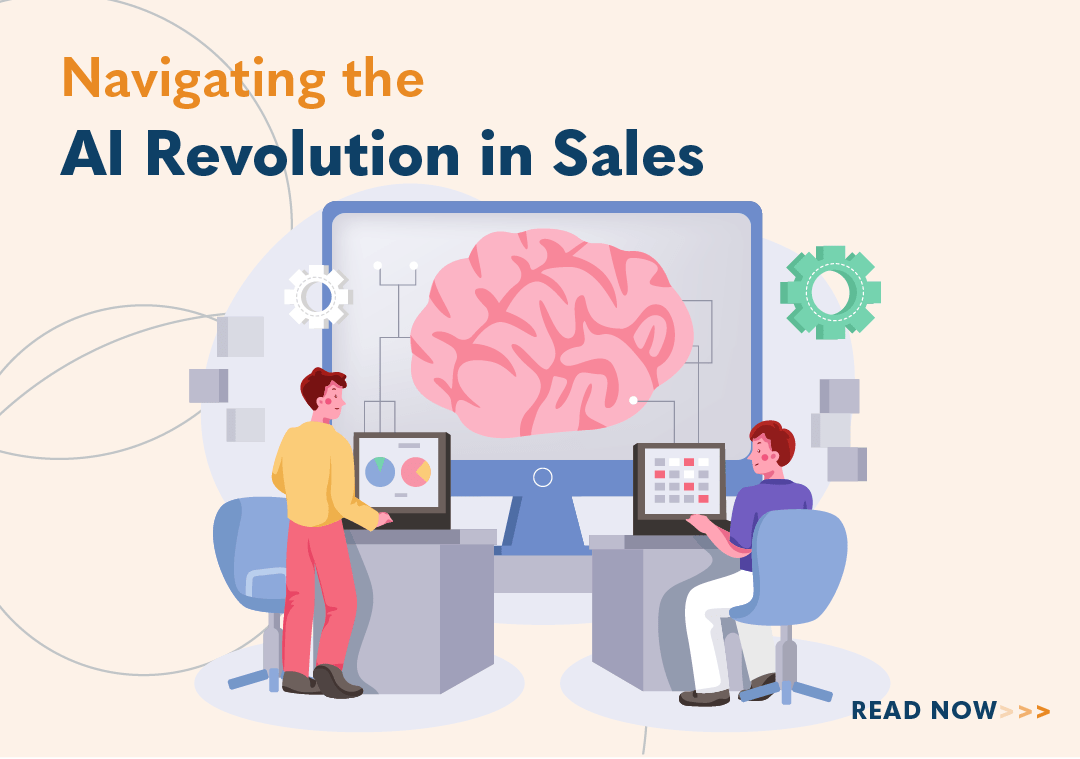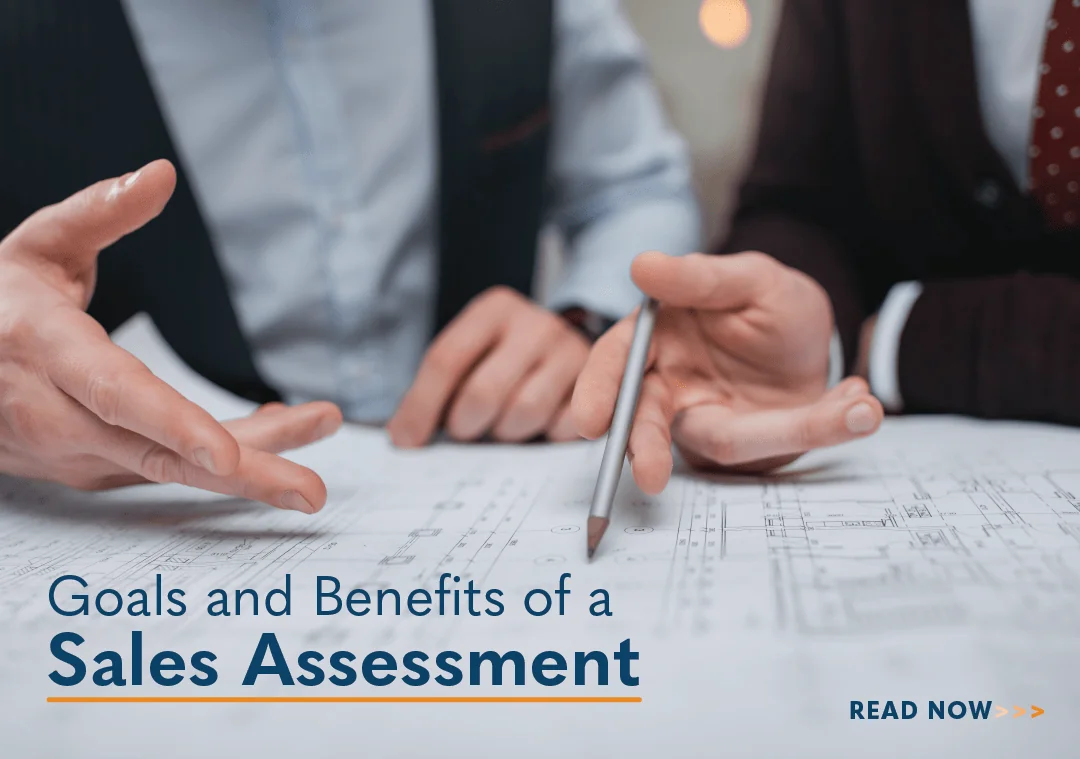Evaluating Your Business Development Strategy

A pillar of success for any sales organization is an effective business development strategy. However, merely having a strategy isn’t enough. Its effectiveness is crucial for sustained growth and competitiveness. And this requires ongoing evaluation.
Of course, changes in the sales landscape and marketplace have a profound effect on your business development strategy. For example, McKinsey’s Future of B2B sales: The big reframe lists the following:
- More hybrid sales roles with a focus on business development in outperforming organizations
- Customer preference, including remote human interactions or digital self-service
These changes can determine your approach, resource allocation, and competitiveness. As such, we will return to these when we discuss tracking, measuring, and evaluating your strategy.
Our recent webinar Turbocharging Business Development Strategies introduced measurement at the macrolevel. Here, we’ll go micro and explore the key metrics, methodologies, and tools for evaluating your business development strategy.
Understanding Business Development Strategies
Effective business development strategies must address customer needs. They also create value propositions tailored to specific customers and industries. In addition, the long-term goal of building lasting relationships is paramount. And this often begins with prospecting.
However, a Janek survey revealed 18% of sales leaders do not have set prospecting metrics. In addition, 32% don’t know how much time reps prospect. This is a missed opportunity.
To ensure consistent success, sales organizations must define their activities and processes. In addition, the roles of marketing and sales automation should be designated and measured throughout the sales cycle. This includes the top, middle, and bottom of the funnel activities.
Further, sales leaders must assess the roles of their teams, including BDRs and SDRs. These are key players in business development. Expectations must be formalized and understood in terms of your lead lifecycle and strategy. These determine the key metrics to track at each stage. And they will reveal opportunities and deficiencies in your processes. Of course, this should include seasonal activities as well as and monthly/quarterly goals and results.
Key Metrics for Measuring Effectiveness
Measuring the effectiveness of your business development strategy starts with identifying your goals and objectives. This is what your strategy hopes to achieve. Then, examine your top-of-funnel activities. These include emails, phone calls, LinkedIn outreach, connection requests, number of meetings, and appointments set.
Today, HubSpot research illustrates the changes that value social selling has brought. For example, 87% of sellers say social selling is effective. Plus, 59% of companies sell more from social media compared to previous years.
Further, Gartner notes 50% of sales development teams include a LinkedIn touch in their cadence. Also, the average number of touches per lead is now 8 to 12. Of course, these should include a mix of channels and be spaced over time.
In addition, for best measurement, consider the makeup of your sales team. Monthly lead value is often inconsistent for hybrid teams. This too must be a factor when measuring activity and processes.
Typically, best-in class sales organizations use the following leading KPIs:
- Conversion rates
- Customer Acquisition Cost (CAC)
- Customer Lifetime Value (CLV)
- Sales Velocity (SV)
- Lead response time
- Customer Retention Rate
- Pipeline health
As leads progress through the funnel, they become opportunities and then customers. This is your conversion rate. Tracked at each stage of the sales process, it can show how much business your strategy develops. Conversion rates also identify deficiencies in your process, such as where a lead stalls. This can reveal areas that need improvement and suggest potential remedies, like sales training and coaching.
The value of a customer is not only the amount an account brings in. There are costs to acquiring new business. These include expenses, such as marketing, sales efforts, and overhead. What an account brings in must be seen in relation to its cost. This determines its true value and the effectiveness of your strategy.
Closely related is the Customer Lifetime Value. This is the total revenue a customer generates over the life of their relationship. Evaluating CLV against CAC helps determine their profitability. This is essential to guide the allocation of resources and investments.
Sales velocity is how quickly deals move through the pipeline. It considers factors such as size, win rate, and sales cycle length. The faster this rate the more efficient and effective the sales process.
Lead response time shows the effectiveness of communication channels and responsiveness. Prompt lead response can significantly improve conversion rates. Only 31.5% of sales development organizations respond to leads within five minutes. Of these, most have specialized SDRs. Here, of course, we see how goals must be measured in relation to the size and scale of your organization.
Earlier, we noted how changes in the sales environment can impact the measurement of results. This is a perfect example. According to Gartner, hybrid selling has become the dominant sales strategy in 2024. For measuring business development, Gartner elsewhere notes hybrid teams struggle to achieve response rates under five minutes. Therefore, when measuring effectiveness, consider the makeup of your sales team and assign appropriate goals.
In addition, they also note the importance of digital channels. In fact, they say by 2025, 80% of B2B sales interactions will occur digitally. As this can affect acquisition, customer satisfaction, and retention, sales organizations must raise their digital game.
A high retention rate signifies customer satisfaction and loyalty. It shows the effectiveness of post-sales support and engagement strategies. According to Forrester, 77% of B2B customer revenue comes from existing customers. Retaining customers ensures repeat business. It also increases the likelihood a deal progresses through the pipeline.
A sales pipeline’s overall health is crucial to the success of a business development strategy. This includes measuring pipeline coverage and velocity. It also includes conversion rates through the sales stages. A well-managed pipeline ensures accurate forecasting and a consistent stream of revenue.
Methodologies for Evaluation
Often, how you measure is as important as what you measure. A straightedge will help you draw a straight line. But unless it’s a ruler, you won’t know the length of that line or the halfway point. The same holds true for a sales organization’s evaluation methodology.
As with that ruler, the success of a business development strategy hinges on accuracy. When measuring yours, consider the following:
- Quantitative analysis
- Qualitative feedback
- ROI analysis
- Competitive benchmarks
Quantitative data is information from your CRM. It also includes marketing automation platforms and financial records. Use these to measure key metrics. Analyze trends over time and segment data by customer or territories. You can then compare these results to industry standards.
Supplement quantitative analysis with qualitative insights, the personal aspects behind your data. This provides a greater contextual understanding and can be obtained through customer feedback, surveys, and sales team interviews. It can identify areas for improvement that might not appear in quantitative metrics alone.
A return on investment or ROI analysis can assess the effectiveness of specific marketing campaigns or sales initiatives. By comparing costs with revenue, you can determine the profitability and value generated by each.
Compare your organization’s performance against your competition. This includes analyzing market share, customer satisfaction ratings, and sales metrics. These can identify strengths, weaknesses, and areas for differentiation.
Tools for Measurement
In addition to which metrics you should track, sales organizations need the right tools. Today, there are many to manage the vast amount of data organizations need. And these are a vital part of measuring the effectiveness of activities and processes. These include:
- CRM software
- Business intelligence tools
- Sales analytics platforms
- Surveys and feedback
CRM platforms include Salesforce, HubSpot, and Zoho. These can track leads, manage customer interactions, and generate insights. This data can be used to monitor sales performance and identify opportunities.
Business intelligence tools include Tableau, Power BI, or Google Data Studio. These utilize customizable dashboards and visualizations to enable sales data analysis. This facilitates decision making and provides actionable insights to improve business development strategies.
Sales analytics platforms, like InsightSquared or Clari, analyze sales performance metrics and forecast revenue trends. These can be tailored to suit your sales organization.
SurveyMonkey, Typeform, or Qualtrics collect customer feedback and sentiment analysis. Incorporated into the sales process, this helps understand customer needs and enhance personalization and service.
Conclusion
Measuring the effectiveness of a business development strategy optimizes performance and competitiveness. This drives sustainable growth. By leveraging key metrics, methodologies, and tools, organizations gain valuable insights. This identifies areas for improvement and enhances data-driven decisions to achieve objectives.
Ongoing evaluation helps organizations navigate the changing sales landscape and outpace the competition. We hope this helps you measure the effectiveness of your strategy. For more information, check out our webinar Turbocharging Business Development Strategies.

- Account Planning (16)
- Awards (42)
- Client Testimonial (37)
- Personal Branding (21)
- Podcast (12)
- Research (77)
- Sales Career Development (90)
- Sales Coaching (165)
- Sales Consulting (141)
- Sales Culture (181)
- Sales Enablement (380)
- Sales Leadership (112)
- Sales Management (268)
- Sales Negotiation (11)
- Sales Prospecting (136)
- Sales Role-Playing (19)
- Sales Training (242)
- Selling Strategies (279)
- Soft Skills (78)
- Talent Management (101)
- Trusted Advisor (29)
- Virtual Selling (57)
- Webinar (13)

























